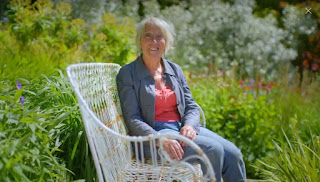
When Carol is not writing about gardening or presenting, she is in the garden.
Whatever sort or size of garden you have, or even if you just have a patio or window box, she is going to show us how, from the basics to more advanced techniques.
She wants to share the excitement and satisfaction of creating a garden whether you’re a novice or experienced, she wants to share the skills.
Carol is ‘ready are you’?
In the first episode Carol wants to show us by following ‘Mother Nature’ whatever sort of garden you have, sunny or shady that by putting the right plant in the right place they will flourish.
This is a learned skill how to group and plant in the correct position and Carol's passion for gardening started aged just 2 years old, growing up in Manchester.
This is a learned skill how to group and plant in the correct position and Carol's passion for gardening started aged just 2 years old, growing up in Manchester.
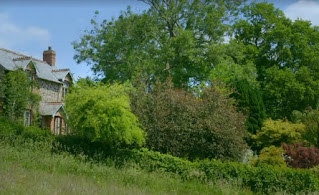
Carol knew this was the place for them and over the next 40 years they have transformed it to their idea of a bit of paradise in Devon.
Mother Nature has been the teacher and by looking at what naturally grows in different conditions and areas you can replicate this in your own garden.

On the shady side of the garden, that became the woodland garden and they looked to nature to plant them up with equivalent plants.
The meadow area has lots of grasses and perennials as well as annuals and plants like Astrantia loves the meadow conditions.
Other plants that love the open sunny conditions are Geraniums, Lace Flower Orlaya grandiflora.
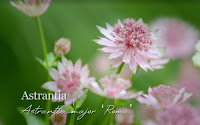
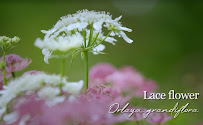
Carol also has a bog area in the garden which has the pond and is surrounded by plants that like the wet and boggy conditions.
Her favourite part of the garden is the shady woodlands as it feels magical and mysterious and is predominately green foliage.
There are splashes of colour from the silver of the Brunner and from Azaleas and Rhododendrons.

Carol has a container she is going to plant up with shade loving plants to show us the type of conditions these plants need.
You don’t have to have a woodland for shade it could be in the shadow of the house of garage or round the back of the wheelie bins.
The first plant she has picked for the planter is an evergreen Fern. She has picked this so it looks good all year and does not go to sleep for the winter.
The first plant she has picked for the planter is an evergreen Fern. She has picked this so it looks good all year and does not go to sleep for the winter.

Carol has made the leaf mold herself by collecting leaves in the autumn and rotting them down.
She doesn’t overfill the pot as there is a lot of plants to put in.
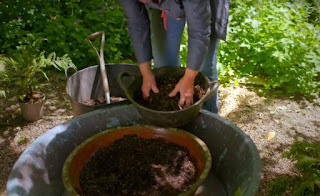
She is adding a Euphorbia also known as Spurges and there are all different types to suit anywhere but she is adding one that’s perfect for dry shade.
The flower stems or brats have small white flowers that last for ages before turning green they can then be cut back to the base.

Once woodland plants are established they basically look after themselves and they get all the nourishment they need from the woodland environment.
Carol has finished her arrangement with all the contrasting foliage and it is much better to look at, than a wheelie bin!
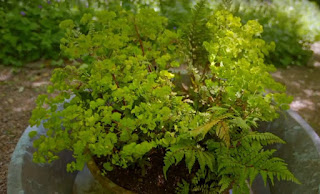
Carol next job is to give us a run down of the different types of plants you can grow.
Once you have found out your soil type and your garden conditions the next exciting part is what plants you want in the garden.

Some people are worried about having a tree especially in a small space and that it may get too big but this is why you need to choose the right tree for the right place.
A good tree for a small garden would have lots of foliage, flowers, fruit and lovely coloured leaves for autumn.
Trees are also great for wildlife and will feed bees and birds.

A good tree will have a straight trunk and most Garden Centres or Nurseries will have suitable tree for you but its best to do some research before you go.
She has chosen an open site which has good soil, if you do not have a garden you can grow them in a big container as big as you can manage.
To make sure it establishes well it will need regular feeding with an organic liquid feed.
The good thing about planting a tree in a pot is if you move you can take it with you.
Carol digs a hole that is as deep as the pot but in width that’s 2 or 3 times as big as the pot.

She then treads it in with her boot to firm it and if planted properly it will not need staking.
As long as the roots are not moving about it will be fine and will hold in place.
Now it's time to give it a good water and it will need watering daily for the first couple of weeks.

They are also an important plant in any garden and Carol shows us a Deutzia with lovely single pink flowers which pollinators love.
There are loads of different types of shrubs and like trees they are a permanent structure whether in leaf or not.

One of Carol’s favourite is a silver Elaeagnus and with its scent it is popular with pollinators.
Another favourite is the wonderfully named Smoke Bush.

Any dead or diseased wood will also need pruning as well as keeping them in shape and healthy and this should be dome in late Winter or early Spring.
It is late Spring in Carol’s garden and it is ok to do a light tidy up and the best tool to use is a pair of loppers.

She makes nice clean cuts cutting off the larger branches first then any smaller dead twigs with some secateurs.
Shrubs can be used as hedges and boundaries in the garden and in Carol garden she uses Box and you can get very creative with it in the garden,
Box is pruned differently to other shrubs as you just need to trim the new growth with shears twice a year in June and Autumn.

Some people like to shape their Box into Topiary and you can create all sorts of shapes and structures.
Carol’s Box hedge is cloud pruned into a big undulating hedge that flows across the 2 borders.

It is an emulation of clouds and then trying to shape the Box to float in soft billowing shapes.
You can start your own box hedge by buying small plants or from cuttings and plant in a open position and keep them well watered and they will grow.

Shrubs can be grown in containers and Carol has chosen a Philadelphus which is known as a Mock Orange because the beautiful scent smells like orange blossom.
The scent is even better at night time when you are sitting out on a cool evening with a glass of wine.
When buying shrubs lift them out the pot and check the roots as you don’t want to buy it if its been pot bound and will take longer to establish.
The scent is even better at night time when you are sitting out on a cool evening with a glass of wine.
When buying shrubs lift them out the pot and check the roots as you don’t want to buy it if its been pot bound and will take longer to establish.
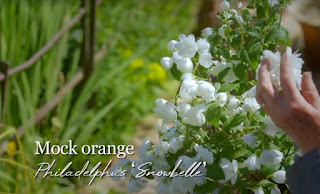
As they are growing in a container she is going to use quite a big shrub to start with and fills the bottom of the pot with crocks which are broken bits of pots, that help the compost to drain.
You don’t have to use crocks but it does mean that if using an ornamental pot with no holes it will not be sitting in stagnant water.
She has used compost rather than soil as it is sterilized so you will not get any weeds in with it.

Carol has a lovely place for the shrub and at night the white will glow.

Carol likes to nurture her plants as with a lot of gardeners she has a need to look after them and give them everything they need.

The next group of plants are herbaceous perennials, herbaceous means the plants doesn’t have a woody stem like a shrub and dies back in the winter. Perennial means they come back the next year and the years after that.
They are the go to plant for any gardener and Carol says a particularly scrumptious example is her Peony.

They do not like to be planted too deep as they have tuberous roots they like to be just under the surface of the soil.
They also need watering well and also need feeding with a liquid organic fertilizer.
Peonies are one of the herbaceous perennials that live the longest and nothing can beat them for their beautiful voluptuous flowers.
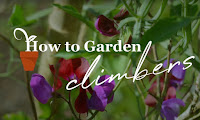
Plants that are often overlooked are climbers and we do not always utilise how much vertical space there is we can grow in.
There are all sorts of climbers from all over the world that will grow successfully in our climate.
On the East side of Carol's cottage she has 2 of the most spectacular climbers, Wisteria which combines well with the other climber, which is a white climbing Hydrangea.

In its native conditions Hydrangea climbs to the top of tall trees to find the light.
Hydrangea Petiolaris are easy to grow and suitable for awkward places like East and North walls and attaches itself with little roots.
Both climbers can quickly change a bare wall to a green screen of leaves and flowers and are suitable for garden walls, fences balconies and can be planted in a large container.
Another fragrant climber and a favourite of Carol’s is Roses and in her garden she has Paul's Himalayan Musk.
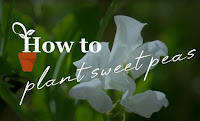
You can sow them in Spring in modules or pots or even directly into the ground and can be sown right up to late summer.
They are an Annual so they need to be grown each year either from seeds or you can buy trays of plants quite cheaply from the garden centre.

In Carol garden she is using poles and she grows as many different colours of Sweet Peas she can fit in.
Carol’s favourite is Cupani which is named after the Italian Monk who first brought seeds to Great Britain
Sweet Peas like a sunny position and Carol is growing hers amongst her Peas and Beans on stout Hazel poles but Bamboo poles are also fine.

They remind Carol of her Mum and although she had a small garden she always would grow a few Sweet Peas for the house.
She grows hers in her borders but they can be grown in a container as long as it’s a sunny spot and they have something to climb on.

Its proper name is Ipomia and they are so easy to grow and will be happy growing anywhere including a container.
Carol is growing hers in a container alongside some grasses as they both love the sunny conditions.

She is hoping that this will give extra height to this part of her garden and its good to think of different ways you can use climbers in the garden.
‘One of the real joys of gardening you’re constantly learning new things’.
Your garden is a great place to try new things and a place to practice your garden design and gives you a chance to express yourself.

The important thing about doing a planter like this is that it is going to be viewed by all sides so you need to plan for what it will look like as it grows.
Many of the kind of plants she is using come from the Tropics and you would think they would need to be kept indoors like house plants, but in the summer they are fine outside.

A plant that’s actually grown from a bulb is an Eucomis and one of the prettiest is called Sparkling Burgundy.
The plant comes from South Africa and they love the hot sun and grow on high ledges.
In the middle of the display Carol is planting a British garden favourite a Dahlia that comes from Mexico and South America and the one she is planting is called Magenta Star.
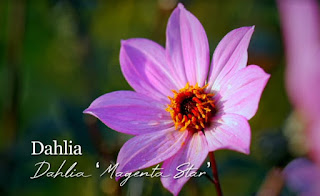
To go with the Dahlia she is adding a Canna as the leaves look jungly.
Carol says some people might think she is rough with plants as she squeezes them all in.

You can make your own jungle even in a small garden using these sort of plants with climbers growing overhead.

It’s a boiling day in June as Carol is creating this planter and Neil turns up with the coffee and a chance for them both to sit and enjoy the garden which is also an important part of gardening.
Non-gardeners often think of it as a hobby but its much more than that as you have a relationship with your plants and you can feel let down if its not going well but also get great pleasure from the plants.

Carol is going to plant something she has read about the ‘three sisters’ bed and it is something the women of the Iroquois Tribe grew.
The women actually grew all the vegetables and the idea is to utilise all the space by ‘stacking’ the three vegetables.
They also grew three vegetables that are good for them, grew well together but that were also good to store.
Non-gardeners often think of it as a hobby but its much more than that as you have a relationship with your plants and you can feel let down if its not going well but also get great pleasure from the plants.

The women actually grew all the vegetables and the idea is to utilise all the space by ‘stacking’ the three vegetables.
They also grew three vegetables that are good for them, grew well together but that were also good to store.

Last year a Pheasant got into her greenhouse and ate all her plants.
She makes a hole again as deep as the pot in a nice open sunny position.
The Second Sister is a Climbing Bean that will eventually climb up the corn and you can use any sort of bean you like but to store a Butter Bean would be best.

Carol has grown hers from seed but you can buy young plants from the Garden Centre or a Nursery.
They also need a cane or pole to climb up.

The reason for this is to cover the ground to retain moisture underneath it, during baking hot summers.
Carol plants the Pumpkin and in about 2-3 months weather permitting the bed should be ready to start harvesting from.
‘Who do I garden for? I garden hugely for myself, it’s very self indulgent, I just love it.
Wildlife Gardening

Carol is aware of the importance of her garden to the creatures and birds she shares it with.
The sound of the birds fills the garden all year round.
Her final project is a pot for a patio which is perfect for pollinators and she is filling it with plants including blue Scabias, purple Wallflowers and blue Geraniums.
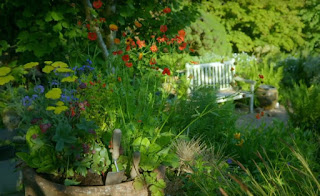
They will hopefully all thrive together as a ‘community of plants’.
Carol thinks gardening should be available to every child in the country as part of their education into the living world.
She has been asked often what she would do if she couldn’t garden and she cannot imagine what it be like not to get up and out into the garden.

‘You sow a seed it’s an act of faith’
All Photographs are copyright of Channel 5

Why does carol plant in a plastic pot in her container?
ReplyDeleteHello WyeGardener
DeleteCarol did talk about when she was planting in the large metal container that she put crocks at the bottom to sit the plastic pot in as the pot had no drainage holes and did not want the plant to stand in stagnant water.
Also I think she likes to keep the big pots in situ and change the planting for the season so if it is in an separate plastic pot she could move that when the plants have stopped looking there best and replace with new seasonal plants.
Personally I think that is a good idea I have pots that for some of the year look amazing and for the rest are a bit dull.
I know there is a strong argument to move away from plastic pots but I have a feeling Carol has had hers a long time and reuses them a lot with her love of propagation and experience of owning her own Nursery.
Hope you are enjoying the blog
Best Wishes
Pete Free 🌻